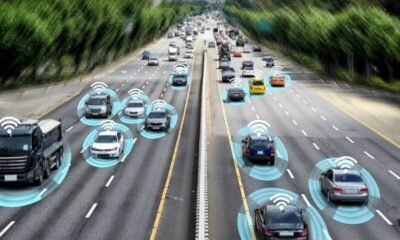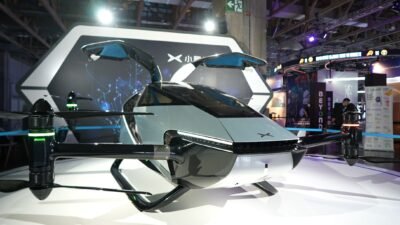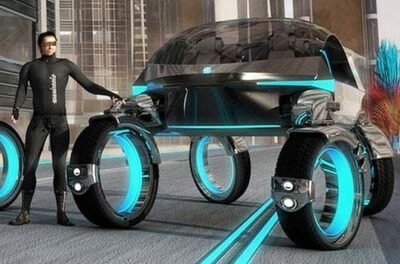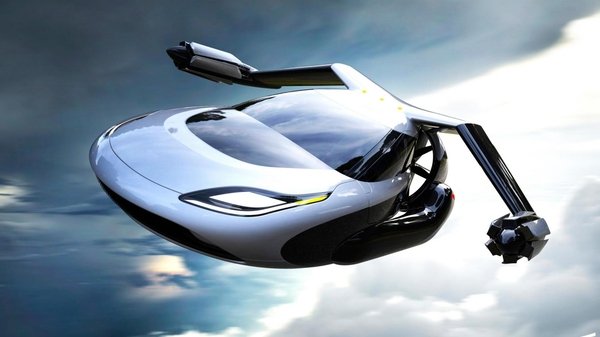The future of automobiles is profoundly influenced by technological advancements and shifts in environmental and social needs. This article explores various aspects of the future of automobiles and the role artificial intelligence (AI) plays in these transformations.
- Electric Vehicles (EVs)
Electric vehicles are recognized as one of the most significant developments in the future of the automotive industry. With advancements in high-capacity batteries, reduced charging times, and increased charging stations, these vehicles will gradually replace gasoline and diesel cars. Furthermore, decreasing prices of electric vehicles will enhance public access. Companies like Tesla, General Motors, and Toyota are currently leading the way, launching new models of electric vehicles.
- Autonomous Vehicles
Autonomous vehicles are cars that operate without a driver. This technology can significantly improve road safety, as human error is a leading cause of many accidents. Self-driving cars also change the travel experience and contribute to traffic optimization and congestion reduction. Companies such as Tesla and General Motors are developing this technology and have begun testing their vehicles on public roads.

- The Role of AI and Vehicle Connectivity
AI and the Internet of Things (IoT) will play a crucial role in the future of vehicles. Cars can connect to smart urban networks, receiving and sending real-time traffic information. AI can analyze environmental data to make better decisions and enhance features such as automatic parking and vehicle-to-vehicle interaction.

- Alternative and Sustainable Energies
In the future, many vehicles will utilize renewable energy sources such as hydrogen or fuel cells instead of fossil fuels. These vehicles not only reduce fuel consumption but also significantly contribute to environmental preservation by minimizing greenhouse gas emissions.
- Shared Mobility and Transportation Economics
Shared mobility models, alongside self-driving and electric vehicles, continue to grow. This shift can reduce vehicle ownership costs and provide access to cars without the need for personal ownership. Moreover, it can substantially decrease traffic and congestion in large cities.
- Innovative Design and Architecture of Vehicles
With the reduced need for mechanical components and the elimination of internal combustion engines, future vehicles will feature simpler, more minimalist designs. The interiors will focus on passenger comfort and the ability to use travel time for work or leisure, enhancing the travel experience.

- Air Transportation and Flying Cars
Some predictions suggest that flying cars or personal flying devices will become part of the future of transportation. This technology is still under development but could bring significant changes to transportation systems in the coming decades.
- Regulations and Legislation
With the emergence of autonomous vehicles and changes in transportation methods, the need for new regulations and laws to govern this industry is increasingly apparent. Governments must collaborate with automakers and legal experts to establish new legal frameworks for ownership, use, and safety concerning self-driving and electric vehicles.
- AI and Autonomous Vehicles
AI plays a critical role in autonomous vehicles. These cars can recognize and understand their surroundings using sensors and cameras. AI analyzes collected data to make complex and instantaneous decisions, such as rerouting and emergency stops. Furthermore, self-driving cars can learn from their experiences and improve their performance over time.
- Driver Assistance and Safety Systems (ADAS)
AI is currently used in many vehicles to provide driver assistance systems. These systems include adaptive cruise control, automatic emergency braking, and blind-spot detection, which can significantly enhance travel safety.
- Cooperative Driving
In the future, autonomous vehicles will be able to communicate with each other and operate in harmony. This type of driving can assist in smart traffic management and reduce congestion. Cars can share data about road conditions, potential hazards, and weather conditions.
- Smart Driver and Passenger Experience
Future vehicles, using AI, will create intelligent and personalized experiences for drivers and passengers. This includes virtual assistants, driver mood detection, and intelligent entertainment systems that cater to the needs and interests of passengers.
- Intelligent Management of Shared Vehicles
AI can play a key role in managing shared vehicles and public transportation. These systems can select optimal routes and predict passenger demand.
- Predictive Maintenance
AI can analyze sensor data to predict potential failures and alert drivers. This capability can reduce maintenance costs and optimize the lifespan of vehicle components.
Conclusion
The future of automobiles encompasses a blend of electric, autonomous vehicles, AI, and the use of sustainable energy, revolutionizing the driving experience. With technological advancements and social changes, we can look forward to a promising and smarter transportation world where cars are recognized not only as vehicles but also as an integral part of our daily lives.


